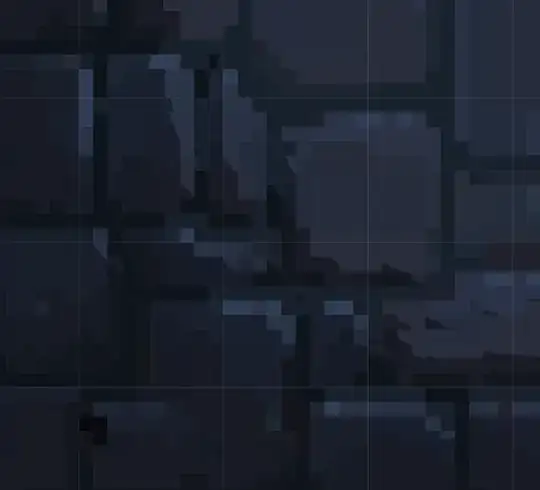I'm working on a shader for dynamic lighting in a 2 unity game. I'm new to shaders but I've managed to get something close to the effect I was looking for, although not 100%.
As you can see in the image below, my texture maps respond to a point light and are shaded using a cel-shaded technique:
However, if you look closely, you can see that a few of the pixels are somewhere between fully lit and half lit, creating diagonal lines across pixels:
What I would like to achieve instead, are pixels that have a single color at all times, depending on the intensity of the light reaching it.
Do I need to move away from the surface shader and implement the lighting in a vertex+fragment shader?
Below is the relevant code for the shader:
Shader "Custom/PixelCellShading"
{
...
SubShader
{
Tags { "RenderType" = "Cutout" }
CGPROGRAM
#pragma surface surfaceFunction PixelCell alpha
#pragma target 3.0
sampler2D _MainTex;
sampler2D _NormalTex;
float _Cels; // number of shading levels, set to 3
struct Input
{
float2 uv_MainTex;
};
void surfaceFunction(Input IN, inout SurfaceOutput o)
{
float3 normalMap = UnpackNormal(tex2D(_NormalTex, IN.uv_MainTex));
fixed4 c = tex2D(_MainTex, IN.uv_MainTex);
o.Normal = normalMap.rgb;
o.Albedo = c.rgb;
o.Alpha = c.a;
}
half4 LightingPixelCell(SurfaceOutput s, half3 lightDir, half attenuation)
{
half NdotL = dot(s.Normal, lightDir);
half cel = floor(NdotL * _Cels) / (_Cels);
half4 c;
c.rgb = s.Albedo * _LightColor0.rgb * cel * attenuation;
c.a = s.Alpha;
return c;
}
ENDCG
}
}

